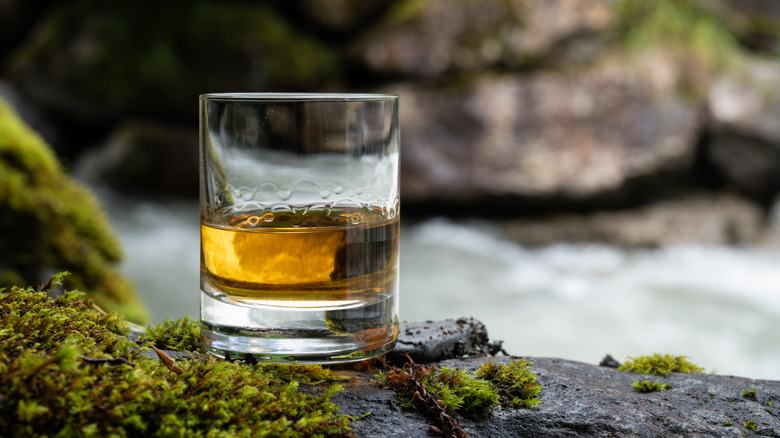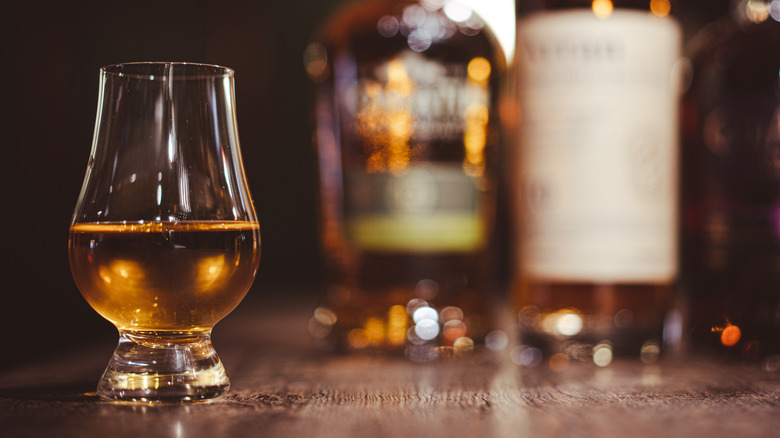This Common Myth May Have You Rethinking That Old Bottle Of Scotch You're Saving
Many of the finest Scotch whiskies are labeled with the number of years that they were aged. It is not uncommon to see a whisky aged for 20 or more years carrying a price tag of thousands of dollars. It might be tempting, seeing this, to simply buy a younger bottle and age it yourself. Unfortunately, it is a common Scotch whisky myth that you can age it at home — Scotch just doesn't work that way. When you finally crack that bottle of Laphroaig 10-year single malt Islay Scotch collecting dust in the cellar, it will regrettably taste very similar to when you first put it up. Fortunately, that bottle is still really, really good.
You see, the aging process for those fine Scotch whiskies — the years that multiply their value — occurs in the cask. Unlike wine, as soon as Scotch is bottled, the flavors are pretty much set. The reason that wine continues to age in the bottle is primarily down to the tannins. If you're ever puckered from a sip of wine, it is because of the bitter and astringent tannins, which are present in young wines at fairly high levels. Over time, these tannins change on a molecular level, becoming essentially too large and complex for you to be able to taste them anymore.
When it comes to Scotch, the only tannins present come from the wood casks used in the aging process. These tannins lend a "dryness" to the whisky and are part of the processes that add an oaken aroma. However, they are not affected by extended bottle aging in the same way as red wine tannins, thus preserving Scotch's taste from the moment it's bottled.
Why are old bottles of Scotch so prized and expensive?
While aging in the bottle doesn't have much of an effect on the character of a Scotch whisky, the same is not true for aging in the cask. To be considered a Scotch whisky, the liquor must be aged in oak casks for at least three years. During this time, the flavors of the wood — and whatever else may have been aged in the cask previously — meld with the whisky, adding layers of flavor and aroma. As you would expect, a longer aging process leads to deeper flavors, and expert distillers work with their whiskies to ensure that these long-aged vintages extract just the right amount from the casks in which they are stored.
Beyond the labor that goes into extracting the perfect amount of oak into a whisky during an extended aging process, there are a few other factors that result in the sometimes astronomical prices that these bottles carry. Firstly, aging whisky for 20+ years means that the distillery must hold space for an entire cask, a cask that could have gone through around seven cycles of the standard three-year aging process. That is a lot of opportunity cost.
You also have to take into account evaporation. Every year that Scotch ages, around 2% to 4% of the whisky evaporates through the wood of the cask, a loss commonly referred to as the "angel's share." Between these two factors, it is easy to see why a 40- or 55-year-old Scotch would carry a startling price tag. So, unfortunately, to try the really old stuff, you'll likely have to shell out more money. But hey, aged whiskey isn't always better — a 5- or 10-year bottle can still be exceptionally good.

